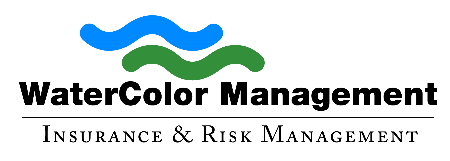
Every business would benefit from having limited interruptions when it comes to achieving its sales goals and overall growth projections. But every business knows this is impossible. From maneuvering around a new reality due to COVID-19 to everyday variables that change the course of its bottom line, a business has to understand that financial loss needs to be expected.
However, there’s one form of financial loss that can be limited through a mixture of awareness and action: employee theft. According to a Hiscox study, U.S. businesses affected by employee theft lose an average of more than $1.13 million every year. Small and midsize businesses accounted for 68 percent of cases, and their median loss in a year hovers near $300,000.
So, how can your clients promote Employee theft prevention in their business? It starts with understanding the different ways this risk can show up.
Embezzlement
Embezzlement is theft by employees or others who are trusted in a business. Most embezzlement scenarios involve the theft of company funds to the employee through diversion or other means. Embezzlement can happen in any part of a company, but sees more concern in departments where checks, cash, money, or credit cards are processed, such as payroll or accounting.
Detecting Employee Fraud
Detecting employee theft is the first step toward promoting employee theft prevention. Most employees who commit fraud or embezzlement exhibit some surefire signs that they are up to nefarious activities, such as living beyond their means, having financial troubles, and having close relationships with vendors.
Business clients can limit employee theft by keeping their eyes open for these warning signs and more, such as:
- An employee who wants to work from home more than usual.
- An employee who works overtime more often, even when they are not required to do so.
- An employee who won’t take vacation.
- Excessive personal spending, especially all of a sudden (i.e. brand-new car, trips, and accessories).
- Petty cash disappearing too quickly.
Manage Employees to Increase Employee Theft Prevention
One of the most effective ways to prevent employee theft and embezzlement is to manage employee behaviors. Businesses can set up specific policies in their employee policies and procedures manual to go over these situations.
Some steps include:
- Requiring employees to take a vacation, keeping them from accumulating too much vacation time.
- Limiting overtime for employees who work in sensitive areas (i.e. payroll and accounting).
- Keeping an eye on relationships between employees and vendors.
- Setting up policies to separate employees who have personal relationships with other employees.
Other Ways to Improve Employee Theft Prevention
Beyond keeping a sharp eye on employee activities, businesses can take more steps to limit employee theft through hands-on initiatives. One way is to separate financial duties of employees. For example, the employee who writes out checks should not be the point of contact for reconciling bank statements.
Also, businesses should keep track of petty cash. The money in a drawer can prove to be a tempting theft opportunity for employees. Businesses should require that all petty cash transactions have a petty cash slip and require multiple signatures on refill checks.
Finally, from the moment someone starts working at a company, they should be educated on employee theft and how they can help prevent it. A new employee who isn’t introduced to employee theft information may not understand the severity of the issue and potentially contribute to a company’s annual loss.
About Watercolor Management
WaterColor Management has insured the water industry for over 30 years. Our policies include unlimited defense cost coverage in the event of a lawsuit against you. Call us at (256) 260-0412 or email info@watercolormanagement.com for a quick quote for your Water Business Professional, Products/Completed operations, Pollution and General Liability Insurance.




